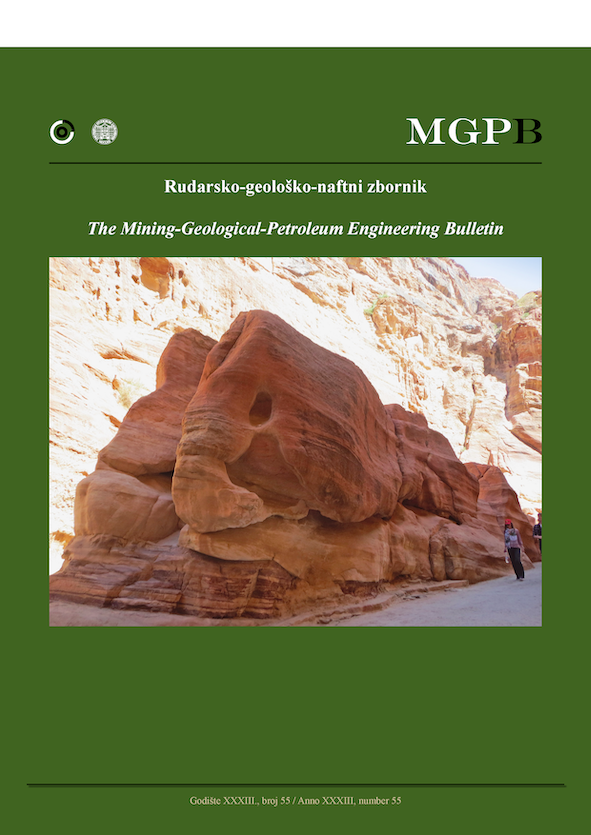Comparative of natural zeolite – clinoptilolite elimination of metal ions/especially Cu (II) with D-Penicillamine from biological environments
DOI:
https://doi.org/10.17794/rgn.2021.4.2Keywords:
zeolite, clinoptilolite, penicillamine, metallic cations, copper, ion exchangeAbstract
Clinoptilolite is used as an adsorbent to remove heavy metal cations due to its function as a molecular sieve. This molecular sieve characteristic has made it possible to study the efficiency of clinoptilolite and D-Penicillamine in a comparative way in terms of the adsorption of heavy metals (especially copper) from a biological medium. For this purpose, clinoptilolite was subjected to grinding to produce a homogenized micronized powder in two sizes with d90=75 and 150 μm. Then, initial adsorption tests in an aqueous medium were performed on 10 ppm solutions of iron, zinc, copper, cadmium and nickel cations in single cation solutions, as well as a mixture of cations. In the next step, tests were performed to evaluate the adsorption of Cu2+ on clinoptilolite under different conditions. Experiments have been performed to investigate the effect of pH, temperature (T), adsorbent dosage, time and cation concentration in a simulated biological medium. According to the results, clinoptilolite has a high ability to remove metal cations from aqueous solutions. The 99.71% removal of copper cations by clinoptilolite indicates the high ability of this mineral to remove copper from any environment. In a simulated biological medium at pH=7 and 5, the copper adsorption rate was 98.18 % and 97.45 % respectively, which indicates the high ability of zeolite to absorb copper cations under biological conditions. An examination of the mass balance calculations has also shown the ability to replace clinoptilolite with penicillamine; 15 mg of clinoptilolite removes 214 mg of Cu from aqueous solutions, which is equivalent to the formation of copper-penicillamine chelate.
Downloads
Published
How to Cite
Issue
Section
License
Copyright (c) 2021 authors and journal

This work is licensed under a Creative Commons Attribution 4.0 International License.
Creative Commons-BY
Authors who publish with this journal agree to the following terms:
In agreeing this form, you certify that:
- You read the ethical codex of the RGN zbornik available at journal web.
- You submitted work is your original work, and has not previously been published and does not include any form of plagiarism.
- You own copyright in the submitted work, and are therefore permitted to assign the licence to publish to RGN zbornik.
- Your submitted work contains no violation of any existing copyright or other third party right or any material of an obscene, libellous or otherwise unlawful nature.
- You have obtained permission for and acknowledged the source of any illustrations, diagrams or other material included in the work of which you are not the copyright owner.
- You have taken due care to ensure the accuracy of the work, and that, to the best of your knowledge, there are no false statements made within it.
- All co-authors of this submitted work are aware of, and in agreement with, the terms of this licence and that the submitted manuscript has been approved by these authors.
Publication licence
You retain copyright in your submitted work, according to journal license policy (CC-BY). By signing this form you agree that RGN zbornik may publish it under the publication licence. In summary the licence allows the following:
Anyone is free:
- To copy, distribute, display, and perform the work.
- To make derivative works.
Under the following conditions:
- The original author must always be given credit.
- The work may not be used for commercial purposes.
- If the work is altered, transformed, or built upon, the resulting work may only be distributed under a licence identical to this one.
Exceptions to the licence
In addition to publishing the work printed under the above licence, RGN zbornik will also enable the work to be visible online.
The journal editorial can change the licence rules anytime but it cannot retroactively restrict author(s) rights.


